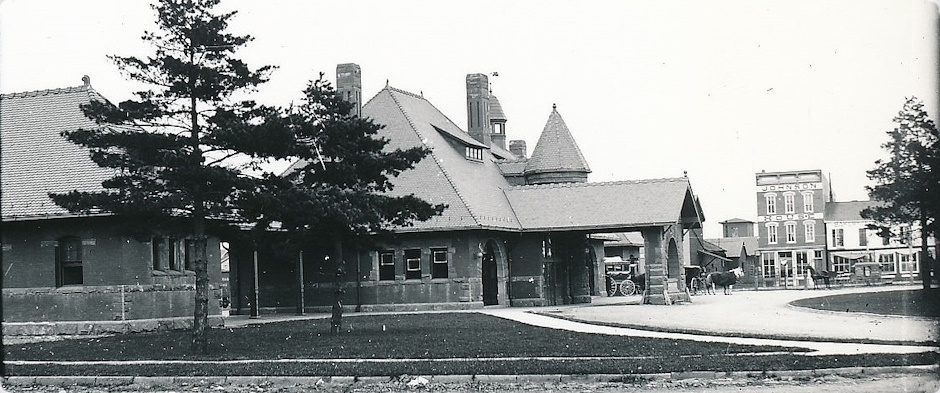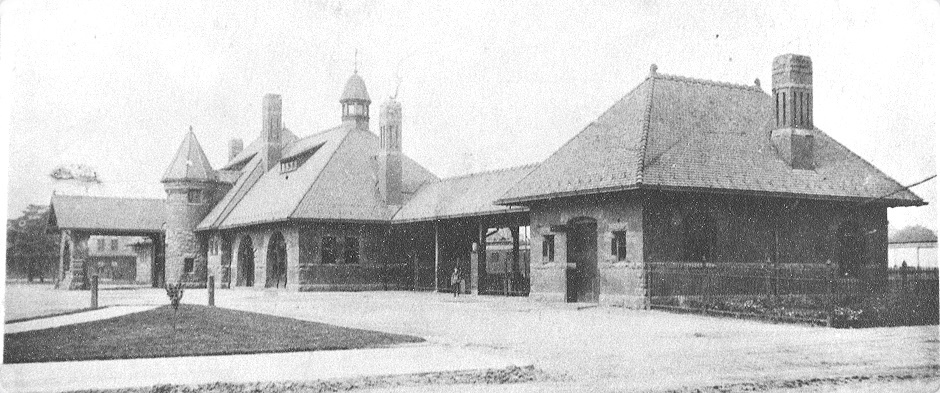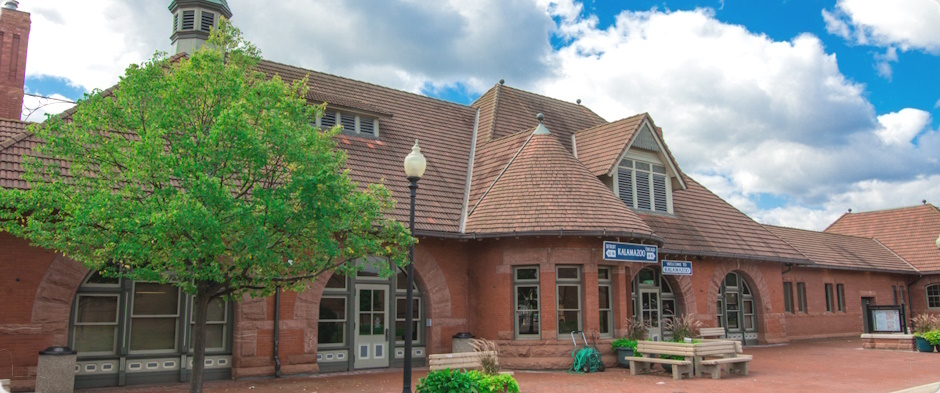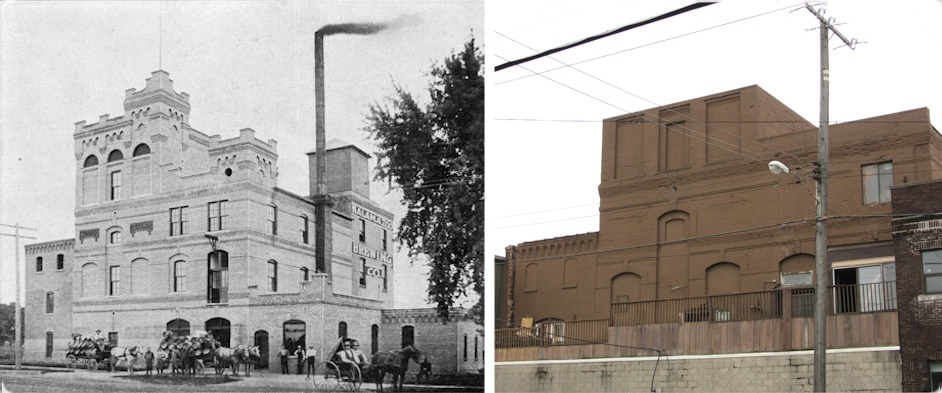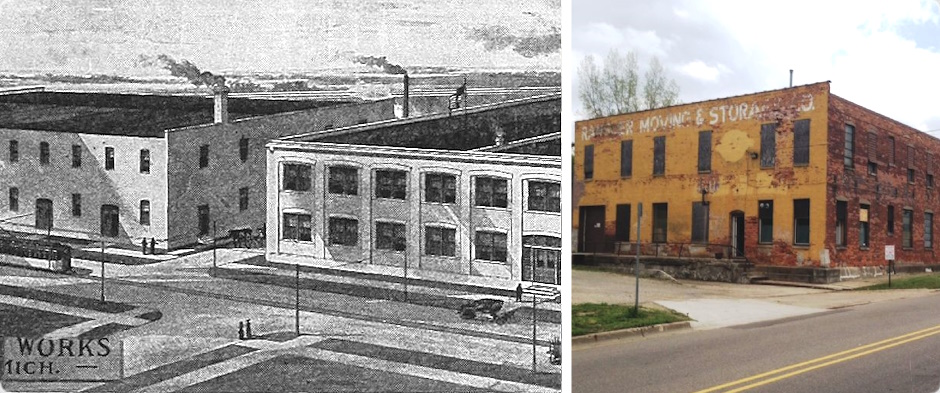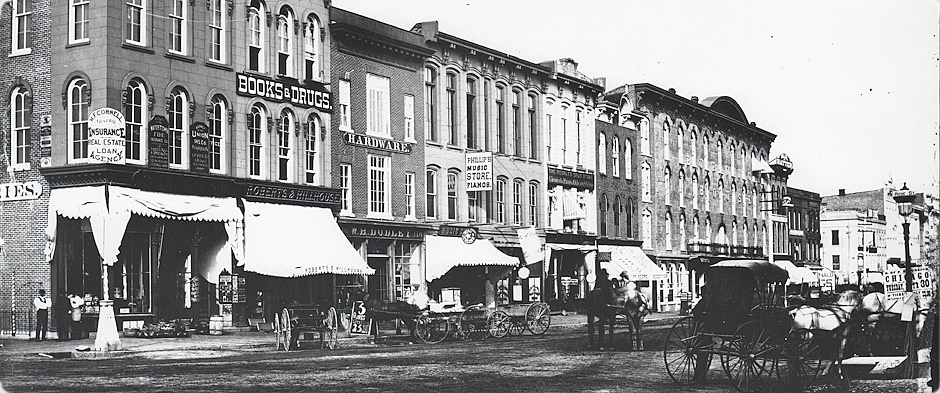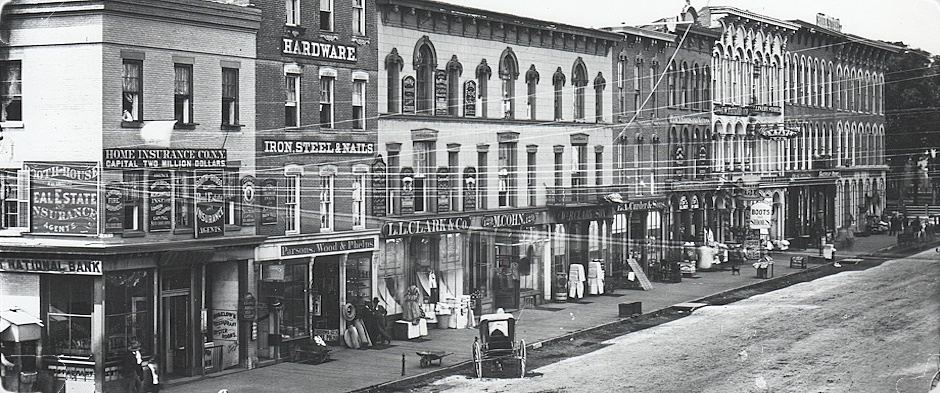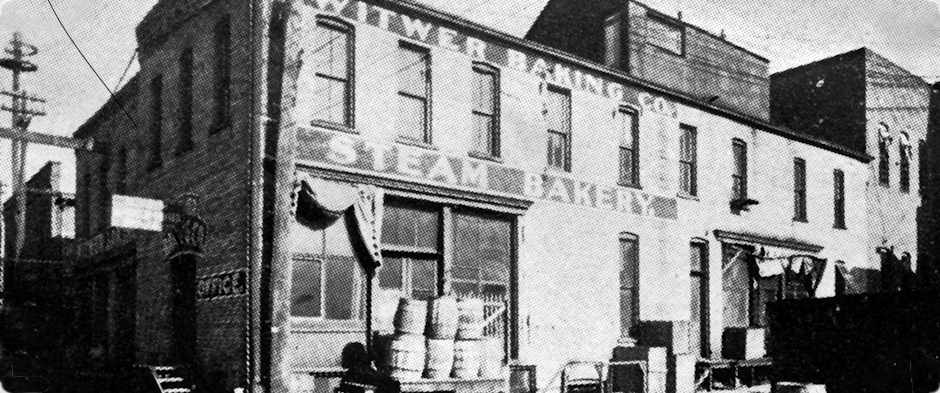The passenger depot building.
The depot was built in 1887 by the Michigan Central Railroad, replacing a wooden structure that stood on the opposite side of the rails (see Eagle Mill picture below). The building was designed by Cyrus L. W. Eidlitz in the extraordinary Romanesque Revival style using red brick, rose sandstone blocks, and red roof tiles. It consisted of three buildings being connected by two open porches which were closed by brick walls later. In front of the entrance there was an awning to keep passengers dry when entering a cab while it was raining. Waiting cabs were stalled right next to the entrance. People could walk on concrete sidewalks whereas the driveway was not (yet) paved, just like the muddy streets in town.
The building now being operated by Amtrak has been altered several times, still keeping its original character. Even the waiting room furnishings dating from the 1920s have been kept.
Brewing beer, casting brass, and milling grain.
In the 1890s, Kalamazoo was a fast-growing town which attracted many industrial businesses. For example, several cart or carricage makers could be found, attracting suppliers, like foundries or manufacturing companies.
The Kalamazoo Brewing Company was the biggest among about a dozen breweries in old time Kalamazoo. Some of them were operated by German immigrants. The remains of the Kalamazoo Brewing Co. building were demolished in 2011.
The Star Brass Works, where trolley wheels were cast as well as parts for Gibson banjos, is long gone. But the structure still exists.
The Eagle Steam Mill was located right across the rails. The mill was driven by a steam engine. Therfore, an impressive firewood yard stretched next to the mill.
Hotels, shops, and guitars.
Next to the depot, some hotels offered train passengers a place to sleep. The Columbia Hotel, former The Arlington, was located on Main Street and looked like typical hotels did at the time. With the hotel long gone, the building was preserved.
East of the depot stretches Burdick Street. Part of it became the first US outdoor pedestrian mall in 1959. But the most important shopping district in the 1890s was on Main Street, some blocks south of the railroad depot. The pictures show the unpaved streets, the wooden sidewalks, horse carts, and sunblinds.
Though famous guitar maker Gibson moved from Kalamazoo to Nashville (Tennessee) in the late 1970s, the old company structure still exists in Kalamazoo. The pictures show the very first location (a former bakery) and the 1917 plant.
Pictures courtesy of:
Kalamazoo Public Library Historical Photographs
rossograph, CC BY-SA 4.0 via Wikimedia Commons
Frankenschulz, CC BY-SA 3.0 via Wikimedia Commons
The Reading Room/Alamy Stock Foto
Getty Images Archive


